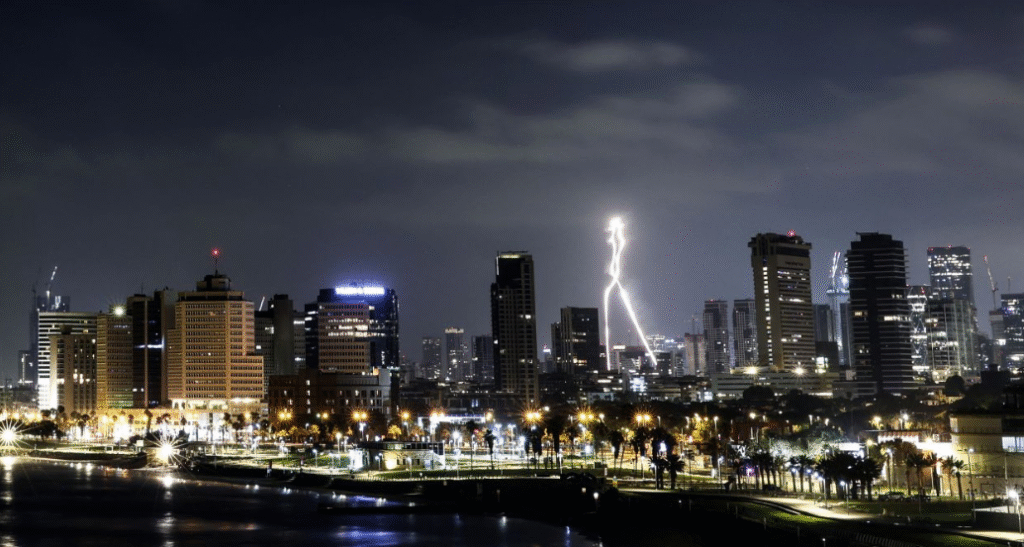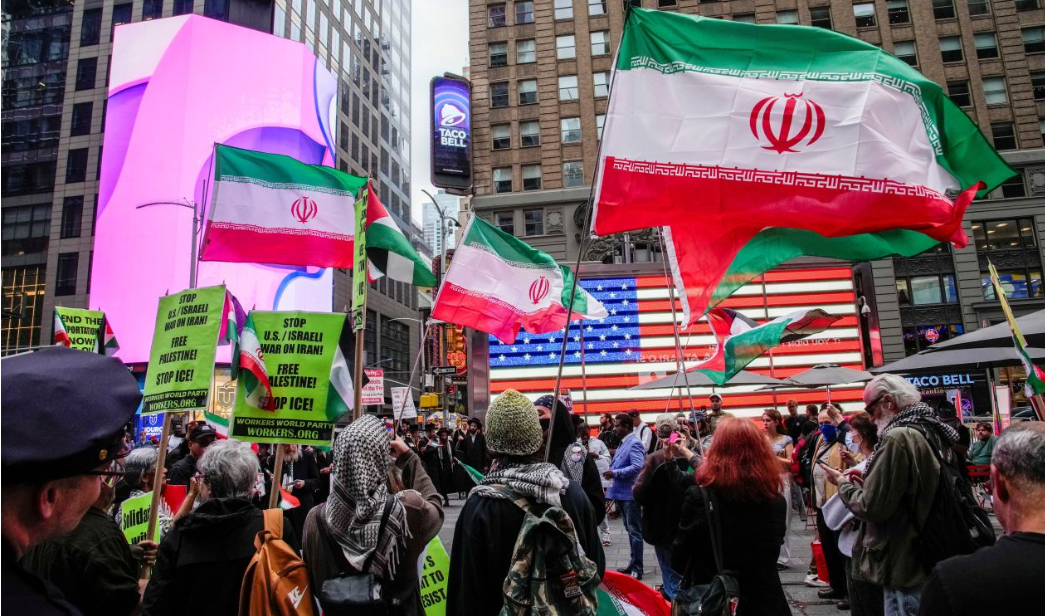
What started as a low simmer has now turned into a roaring fire. The long-standing hostility between Israel and Iran has escalated dramatically, entering its fifth consecutive day of conflict. Missiles, drones, cyber-attacks, and proxy clashes have replaced diplomatic warnings. But what’s really happening behind the headlines? Let’s break it down.
Timeline of the Escalation
Day 1 – Initial Clashes
Tensions sparked along the Syrian border, where Israeli jets bombed suspected Iranian supply lines. Iran, claiming the deaths of two senior officers, vowed swift revenge. This wasn’t just saber-rattling—it was a declaration of war.
Day 2 – First Wave of Airstrikes
Iran retaliated with long-range drones targeting Israeli military bases in the Negev Desert. While the Iron Dome intercepted most, several hits were reported. In response, Israel struck deeper into Syria and Iraq, targeting Quds Force command centers.
Day 3 – Proxy Forces Enter the Scene
Hezbollah launched rockets from southern Lebanon. Houthi militants in Yemen fired ballistic missiles toward the Israeli Red Sea coast. The conflict was no longer bilateral—it had become regional.
Day 4 – Civilian Areas Impacted
Tragedy struck when Iranian missiles hit a residential block in Tel Aviv, killing 17. Israeli strikes flattened neighborhoods in Damascus and Aleppo. Civilians began fleeing in droves, and the humanitarian crisis ballooned.
Day 5 – Full-Scale Military Exchange
By day five, both nations were in a state of open warfare. Iran launched over 100 drones and missiles in a coordinated attack; Israel responded with saturation bombing over Iranian missile facilities. Warships from both navies moved into key choke points in the Mediterranean and Persian Gulf.
The Key Players
Israel’s Military Strategy
Israel’s goal appears to be crippling Iran’s command infrastructure, primarily targeting missile factories, command bunkers, and IRGC bases.
Iran’s Retaliatory Tactics
Iran’s strength lies in asymmetric warfare: drones, long-range missiles, and its powerful proxy network. It’s betting on attrition over direct confrontation.
Role of Hezbollah and Other Proxies
Hezbollah, the Houthis, and Shiite militias in Iraq have all joined Iran’s side. This creates a “ring of fire” around Israel, complicating its military response.
Military Capabilities on Display
Israel’s Iron Dome and Offensive Capabilities
The Iron Dome continues to intercept threats with high efficiency, while Israeli F-35s and long-range artillery have inflicted heavy damage on Iranian and Syrian positions.
Iran’s Drone and Missile Arsenal
Iran is showing off its domestically developed Shahed drones and Fateh missiles. Their accuracy and volume are both impressive—and dangerous.
Naval Maneuvers in the Strait of Hormuz
Iranian gunboats have begun shadowing U.S. and Israeli vessels, threatening to close off a vital oil shipping route.
Civilian Impact and Humanitarian Concerns
Casualty Reports So Far
Over 800 civilians are confirmed dead across Iran, Syria, and Israel, with thousands more injured. Hospitals are overwhelmed.
Displacement and Infrastructure Damage
More than 100,000 people are now displaced. Power grids, airports, and water systems have been targeted, especially in southern Lebanon and Damascus.
Role of International Aid Agencies
Red Crescent, UNHCR, and Médecins Sans Frontières are rushing supplies into conflict zones, but road access is limited.
Regional and Global Reactions
U.S. and NATO Responses
Washington has sent two aircraft carriers to the eastern Mediterranean. NATO is urging restraint but preparing contingency plans.
Arab League and Gulf States’ Stance
While divided, most Gulf nations are urging calm, fearing economic disruption and domestic unrest.
UN Calls for Ceasefire
The UN Security Council has called for an immediate ceasefire, though no resolution has passed due to vetoes.
Historical Context
Longstanding Tensions Between Israel and Iran
This is not new. Their animosity stems from ideological differences, competition for influence, and the nuclear issue.
The Nuclear Deal Fallout
The collapse of the JCPOA nuclear deal in 2018 rekindled tensions. Iran accelerated enrichment, and Israel stepped up sabotage efforts.
Past Conflicts and Proxy Engagements
From assassinated scientists to strikes in Syria, the two nations have been engaged in a “shadow war” for over a decade.
Media Coverage and Public Sentiment
Coverage in Israeli and Iranian Media
Both governments are spinning narratives: Israel as defender, Iran as avenger. Independent voices are being censored.
Social Media Trends and Propaganda
Hashtags like #PrayForTelAviv and #FreeJerusalem trend worldwide. Deepfake videos and AI-generated propaganda flood platforms.
Economic and Energy Market Repercussions
Impact on Oil Prices and Global Markets
Crude oil has surged past $120 per barrel. Stock markets in Asia and Europe have taken a hit. Inflation fears rise.
Disruption of Shipping Routes
The Strait of Hormuz, responsible for 20% of global oil flow, is under threat. Insurance rates for cargo ships have skyrocketed.
Reactions from the Business Community
Multinational corporations are pulling out of risky regions, pausing production and investment in affected areas.
Cyber Warfare and Information Tactics
Hacking Incidents Between Both States
Israel’s water systems were briefly shut down by Iranian hackers. In retaliation, Tel Aviv disrupted Iran’s banking sector.
Disinformation Campaigns Online
Fake news and AI-generated content flood Telegram, Twitter, and TikTok, making it harder for the public to distinguish fact from fiction.
The Risk of a Wider War
Potential Involvement of the U.S. and Russia
While the U.S. supports Israel, Russia has strategic ties with Iran. Their involvement could spark a global crisis.
Risks for Neighboring Countries
Jordan, Turkey, Lebanon, and Saudi Arabia are on edge. Spillover violence is already being reported along their borders.
Possibility of a Prolonged Regional War
If diplomatic channels remain blocked, this could turn into a years-long conflict like Iraq or Syria.
Diplomatic Efforts and Ceasefire Talks

Role of Turkey, Qatar, and Egypt in Negotiations
Backdoor talks are being held in Doha and Cairo. Turkey is offering to mediate.
UN Peacekeeping Options
A UN peacekeeping mission is being considered, but deployment could take weeks.
Future Scenarios
Possible Endgame Situations
- Ceasefire and de-escalation
- Regime collapse in one of the nations
- Protracted regional warfare
Risks of Nuclear Escalation
Any major loss could push Iran to threaten its nuclear capabilities. That would change the game overnight.
Analysis: What’s Really at Stake?
Power, Ideology, and Regional Hegemony
This isn’t just about land or missiles. It’s about religious authority, national pride, and global alliances.
The Struggle for Influence in the Middle East
Both countries want to be the top dog. Neither wants to blink first.
Conclusion
The Israel-Iran conflict is more than just another Middle Eastern skirmish. It’s a clash of titans with ripple effects reaching every continent. While hope remains for peace, the world watches nervously as two powers edge closer to a war no one can afford.
FAQs
1. Why are Israel and Iran fighting?
They’ve had hostile relations for decades, intensified by ideological, religious, and geopolitical rivalries.
2. What’s the role of Hezbollah in this conflict?
Hezbollah acts as Iran’s military arm near Israel’s borders, launching coordinated attacks in this escalation.
3. Is this affecting global oil prices?
Yes. The threat to shipping in the Persian Gulf has caused oil prices to spike significantly.
4. How are civilians coping on both sides?
Thousands have been displaced, and casualties continue to rise. Aid is limited and danger remains constant.
5. What’s being done to stop the war?
Countries like Turkey, Qatar, and Egypt are trying to mediate. The UN is urging a ceasefire, but progress is slow.

